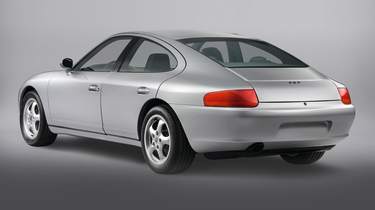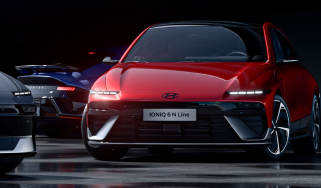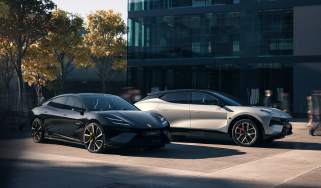Porsche 989 – dead on arrival
Porsche’s first saloon might have predated the Panamera by a decade and a half, had the sums added up

The financial crash of 1987 wasn’t kind to Porsche’s future model plans. Against a backdrop of falling sales and unfavourable exchange rates the company was forced to cancel project 965, a 959-alike ultra 911 (DOA, evo 266), and the entry-level, mid-engined 984 Junior (DOA, evo 298), leaving the new model cupboard looking rather empty. Once the 964 evolution of the 911 had been announced in 1989, Porsche decided to follow a different path out of difficult times.
Project 989 was an all-new ‘four-door sports car’ with a hatch at the back and a V8 at the front, these contrasting elements hoping to catch the head and the heart of people who wanted a Porsche but also needed something practical and family friendly. The car would come with a choice of manual or Tiptronic transmission and would be rear-wheel drive, though four-wheel drive (and possibly four-wheel steering) were pencilled in for the future, as was a turbocharged version.
Blown or not, the V8 wasn’t an adaptation of the unit from the 928 but based on the engine from the Audi V8, heavily reworked by Porsche. Capacity was set at 3.6 litres and later increased to 4.2 litres, all the better to achieve a target output of at least 300 horsepower.
> Porsche 984 Junior – dead on arrival
In early 1991 Porsche held a review of full-size styling models, three from its in-house studio and one from Giugiaro’s Ital Design. The Italian car didn’t fit the brief, looking rather too reminiscent of two earlier Ital one-offs, the Jaguar Kensington concept of 1990 and 1989’s SEAT Proto T, and management went with a home-grown effort by Matthias Kulla. Porsche archive photos of the design shoot-out record a Lexus LS 400 lurking in the background, suggesting the team at Stuttgart knew they had to keep an eye on current V8 cruisers if the production 989 was to usurp whatever currently sat next to 911s in the garages of target customers.
While the designers were refining the look of the car, the engineers had started engine testing in modified 928s and then built a mule by taking a Mercedes 230 CE and grafting 989 hardware underneath, the only clues being a Porsche steering wheel and seats, and wider front wings rather like those on the Porsche-built 500 E saloon. Perhaps out of guilt, all the Mercedes badges were removed.
With the creation of more hacked-about Benzes the engineering fleet was soon eight strong and things seemed to be progressing well for project 989. But, in truth, they weren’t. The cost of getting the car to production kept rising and was now estimated at one billion Deutschmarks, or about £800m in today’s money. Worse yet, in an uncertain market the sales projections for the car had been wound back from 15-20,000 cars a year to just 5000, and this in turn pushed up the planned showroom price, now likely to be no less than a punchy 150,000DM, or £115,000 today. Porsche was in a fragile financial state and it could have been fatal to pursue a model with such a slim chance of sales success. In September 1991 Porsche R&D director Dr Ulrich Bez fell on his sword over the spiralling cost of the 989 and in early 1992 the whole project was cancelled.
Instead, Porsche spent what money it had on the platform-sharing concept that gave us the original Boxster and the 996-shape 911, the latter using a lot of 989 DNA in its exterior design. Anyone wanting a more practical, four-door Porsche would have to wait until 2002 and the first Cayenne or 2009 when the low-slung, V8-powered spirit of the 989 was captured by the Panamera. The only evidence of the actual 989 exists in the storage bays of the Porsche museum, where they still have Giugiaro’s rejected styling proposal, one of the Merc CE mules, and, as pictured here, the final, fully-trimmed fibreglass design model.
This story was first featured in evo issue 309.






